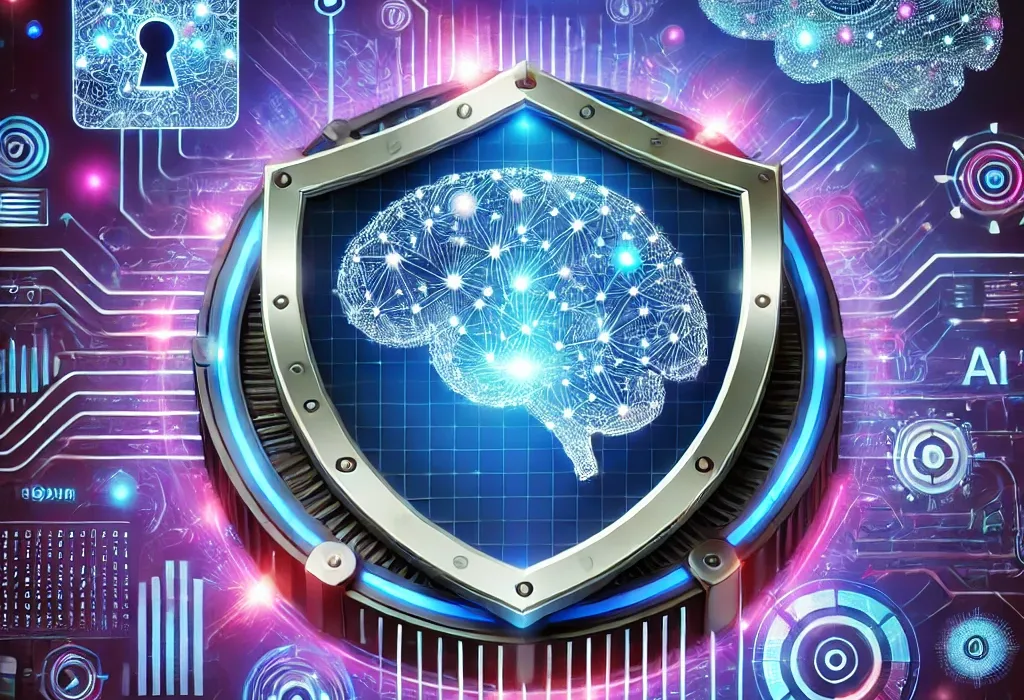In today’s digital age, cybersecurity threats are more sophisticated than ever. From phishing attacks to ransomware, cybercriminals are constantly evolving their tactics. Amid this complex landscape, Artificial Intelligence (AI) has emerged as a powerful ally in the fight against cybercrime. But is AI truly a game-changer, or is it just another overhyped buzzword? Let’s delve deeper. 🌐🚀💡
The Role of AI in Cybersecurity 📊🔒🎨
AI is transforming the cybersecurity industry by enabling faster threat detection, automated responses, and predictive analytics. Unlike traditional systems that rely on static rule-based algorithms, AI uses machine learning to adapt and improve over time. Here’s how AI is making an impact: 🎨🔒📊
- Threat Detection: 🛡️
- AI analyzes vast amounts of data to identify unusual patterns. ⚡
- Machine learning algorithms can detect anomalies indicative of cyberattacks. 🧠
- Example: AI-driven Intrusion Detection Systems (IDS) can spot zero-day threats in real-time. 🔍
- Automated Incident Response: 🤖
- AI can automate responses to mitigate threats instantly. ⏱️
- Example: AI-powered tools like SOAR (Security Orchestration, Automation, and Response) handle repetitive tasks, allowing human analysts to focus on complex problems. 🔄
- Predictive Analytics: 🔮
- AI predicts potential vulnerabilities by analyzing historical data. 📜
- Example: Predictive threat intelligence helps organizations strengthen their defenses proactively. 🔐
Microsoft Security Copilot: A Game-Changer in AI for Cybersecurity 🌎🕵️♂️🚀
One of the most groundbreaking applications of AI in cybersecurity is Microsoft’s Security Copilot. This AI-powered assistant is designed to revolutionize how security professionals identify and respond to threats. Here’s why it’s making waves: 🚀🕵️♂️🌎
- Integration with Microsoft Ecosystem: 🔗
- Security Copilot seamlessly integrates with Microsoft tools like Defender, Sentinel, and Entra ID. 🖥️
- It provides a unified platform for threat detection, analysis, and response. 🤝
- Natural Language Processing (NLP): 🗣️
- Using advanced NLP, Security Copilot allows security teams to interact with data through natural language queries. 💬
- Example: Analysts can ask, “What are the top threats in my network today?” and receive actionable insights instantly. 🛠️
- Incident Prioritization: 🕒
- Security Copilot uses AI to prioritize incidents based on severity and potential impact, ensuring teams focus on the most critical issues. 🚨
- Learning and Adaptation: 📚
- The system learns from user interactions and adapts over time, becoming more effective in assisting with threat mitigation. 🧠
The Benefits of AI in Cybersecurity 🚜🕵️🌐
AI offers several advantages that make it indispensable in the cybersecurity realm: 🌐🕵️🚜
- Speed: AI processes data and identifies threats faster than human analysts ever could. ⚡
- Scalability: It can analyze massive datasets from global sources, far beyond human capacity. 🌍
- 24/7 Monitoring: AI ensures constant vigilance without fatigue. 🕒
- Cost-Effectiveness: Automating routine tasks reduces the need for extensive human resources. 💰
Challenges and Limitations 🔧🤖🔔
Despite its advantages, AI is not without its challenges: 🔔🤖🔧
- False Positives: ❗
- AI systems may misinterpret legitimate activities as threats, leading to alert fatigue. ⚠️
- Adversarial AI: 🧑💻
- Cybercriminals are using AI to develop more sophisticated attacks. 🕶️
- Example: AI-generated phishing emails that mimic human behavior. ✉️
- Data Dependency: 📂
- AI requires large datasets for training, which may not always be available or clean. 📉
- High Costs: 💸
- Developing and implementing AI solutions can be expensive, making it inaccessible for smaller organizations. 📊
Real-World Applications of AI in Cybersecurity 🎮🕵️🔮
AI is already being used in various cybersecurity tools and platforms. Here are some notable examples: 🔮🕵️🎮
- Microsoft Security Copilot: Revolutionizes threat detection and response, ensuring faster and more precise identification of threats through advanced AI capabilities. with seamless integration and NLP capabilities. 🌟
- Darktrace: Uses AI for threat detection and network monitoring. 🛡️
- CrowdStrike: Employs AI for endpoint protection and threat intelligence. 🖥️
- Google Cloud Security AI: Integrates AI to identify and mitigate risks in cloud environments. ☁️
The Future of AI in Cybersecurity 🚀🔒📊
The future of AI in cybersecurity looks promising, with advancements in: 📊🔒🚀
- Behavioral Analytics: Identifying insider threats through behavioral patterns. 👤
- Natural Language Processing (NLP): Enhancing phishing detection by analyzing email content. 📩
- Deep Learning: Improving accuracy in detecting complex threats like Advanced Persistent Threats (APTs). 🧠
Conclusion: Hype or Game-Changer? 📝🌐🕵️
AI is undeniably transforming cybersecurity. While it’s not a silver bullet, its ability to detect, respond to, and predict threats makes it a game-changer. Tools like Microsoft Security Copilot highlight how AI can elevate security operations to new heights. However, organizations must approach AI adoption strategically, balancing its benefits with its limitations. As cybercriminals evolve, leveraging AI effectively will be critical in staying ahead of the curve. 🕵️🌐📝


